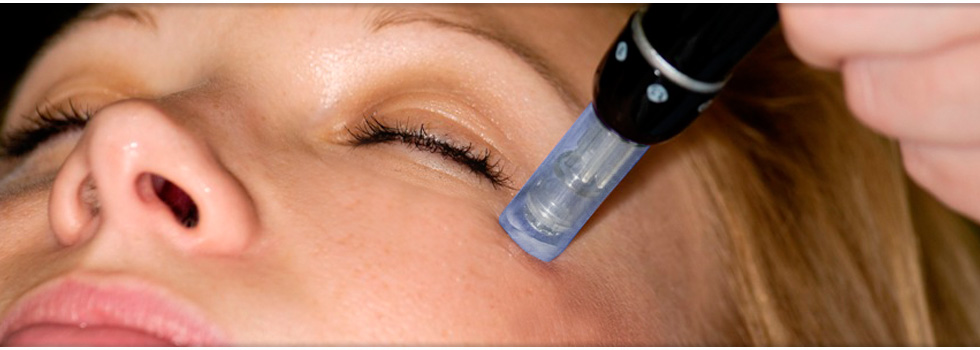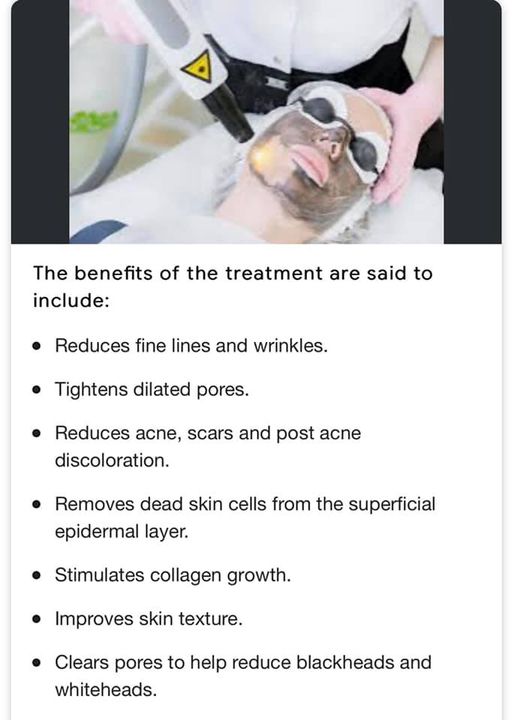Acne Scars Treatment in Islamabad
WHAT CAUSES ACNE?
Acne is a skin disorder that commonly occurs during puberty; however adults can also be affected by it. Pores in our skin are connected via follicles that act as passageways to oil glands, which are placed underneath your skin. These glands produce a natural liquid known as sebum which help to carry dead skin cells through the follicles, bringing them to the surface of your skin. Hairs grow out of follicles, and when an accrual of oil under the skin blocks these follicles, pimples begin to grow and form.
The majority of of 11 to 30 year olds will experience acne at some point in their lives. It affects both men and women, but younger men are more likely to get acne due to the presence of higher amounts of testosterone which can exacerbate the condition. If you haven’t gotten acne yet, you are one of the lucky few! However, most of us have experienced acne at one point of time.
HOW CAN IT BE TREATED?
Using the new technology of Fractional Laser Resurfacing (Lux1540, non-ablative) can obtain results that are similar to that of deep chemical peels or ablative laser resurfacing, minus the discomfort or the usual downtime associated with such techniques. The technology utilises laser energy micro beams to penetrate and break down skin tissue through the epidermis. Your body will naturally heal and during the process, creates new, healthy tissue to replace the affected areas that have undergone treatment. Scars should be of a lighter colour and your skin texture will be more even,* leaving no visible wounds and allows you to apply make-up immediately following the procedure.
HOW OFTEN?
Depending on your skin, additional treatments are spaced 1-4 weeks apart for a total of 4-5 treatments. Over the next few months, further collagen remodelling and some skin tightening will help to maintain your acne-free complexion. Furthermore, a healthy skincare routine consisting of facials and products should help you to maintain your results as well. Do consult your doctor to determine the best course of action for your skin.
This treatment is suitable for individuals who have skin that is aging, wrinkled, sagging or has an irregular texture. It may also be used to treat skin damaged by the sun or with irregular pigmentation.
Individuals who are of a darker skin tone are not advised to undergo this treatment – this is because prolonged healing of the surface is required. In many cases, pigmented skin heals itself via hyperpigmentation, and this may take several months of treatments and even additional laser treatments to heal fully.
You should consult your doctor to ensure that this treatment is suitable for your skin and weigh up the time required along with the risks. The downtime is fairly lengthy and you should be fully aware of the requirements and possible outcomes before making an informed decision.
Microneedling for Acne scars

What causes acne scars?
Acne and its causes are the subject of ongoing debate amongst medical investigators and professionals. Acne occurs throughout the world and it’s occurrence is not solely confined to teenagers. Acne occurs more frequently in males during their adolescence but is more common in women after age twenty.
When it affects adult men and women, often they experience more severe consequences. Acne treatment usually focuses on a time limited condition. But, sometimes acne treatment becomes a challenge for skin care medical professionals because in some patients acne frequently becomes difficult to treat and control. It becomes a devastating and recurring condition that can lead to acne scarring. In the more severe cases of acne and for reasons not clearly understood, acne scarring occurs in up to 14% of women and 11% of men. Acne and it’s potential causes should be investigated by the clinician.
There are multiple causes of acne. These include:
|
Acne scars are the result of bacterial overgrowth that occurs in the skin follicles after they become blocked by excessive oils and by a change in the keratin (the residual of old skin cells) production process such that it triggers an intense inflammatory response. This intense response by the immune system, at its worst, results in large pus filled pockets leading to the formation of nodules or cysts which lead to scarring of varying degrees of severity.
Scarring occurs as the skin attempts to heal. The newly produced collagen becomes disorganized and thickens. Because the epidermis anchors to underlying skin layers, this results in scarring. The scars types are described by their appearance such as “ice-pick”, “rolling” or “boxcar”. Although most acne treatments target the normal bacteria residing in your skin and pores, the “infections” and pore blockage are usually a secondary response to a potential underlying problem. In order to control or stop the active acne process, one should investigate the potential causes of acne outbreaks. Acne is usually not just about the skin.
Acne Scars Treatment in Islamabad
How can I treat acne scars?
It is well known that the esthetic disfigurement and the psychological damage caused by acne scarring can last a lifetime. Until recently, the prevailing medical thought was that acne scars are “very difficult” to treat given that past treatment options were so ineffective. This thought includes the more currently available treatment options that also provide limited results.
Unfortunately, the extent of the psychological stress resulting from acne scarring has been seriously unappreciated and misunderstood by the medical community. For many years the medical community felt that few effective treatment options were available. Often the patients were advised to “live with the scarring”. Thankfully, you don’t have to live with acne scars anymore!
What is Micro-Needling, and how does it permanently reduces acne scars?
A Medical Micro-Needling treatment using the appropriate model is ideal for treatment of acne scars. We use sterile, ultra-fine, surgical strength micro-needles. The micro-needles cause new collagen and elastin to be deposited (collagenesis), new capillaries to be formed (angiogenesis) and new skin cells to be created.
Actual before and after examples showing acne scar treatment with Medical Micro-Needling treatment:
How many Micro-Needling treatments will I need?
Depending on the individual skin condition, skin sufficiently resurfaces after 1-3 Medical Micro-Needling procedures. To allow skin cell regeneration, one should wait at least 6-8 weeks between procedures. As aging continues, we recommend one refresher treatment every year.
Advice: Avoid sun tanning and prolonged exposure to direct sunlight. When exposed to sun, always use sun screen SPF30 or above.
How do I care for my skin after Micro-Needling treatment?
Immediately after your Medical Micro-Needling procedure, do not take any anti-inflammatory medications such as ibuprofen, Motrin or Advil. These agents will interfere with the natural inflammatory process that is critical and responsible for your skin rejuvenation. Follow these simple steps:
Day of procedure: No lotions, makeup or other topical products on your face before your procedure. After your procedure your medical provider may apply a lipopeptide booster, skin moisturizer, and sun screen. You may clean your face with a gentle cleanser before bed.
Day 1: On the next day, you may clean your face as usual and apply makeup, lotions and other topical products as usual. Stay away from exfoliants or glycolic acids that are present is cleaners as these can make your skin very dry after the procedure. Be sure to use an approved SPF30 or greater sunscreen!
Days 2-7: Within two (2) days following your Medical Micro-Needling procedure, you will notice skin dryness and flaking. This is due to an increased turnover of skin cells. During this period, you may apply your regular skin moisturizer. Follow the instructions given to you by your medical professional.
If your medical professional used the roller around the eyes, you may have a little micro bruising that may exist for three or four days. This can easily be covered with makeup.
Days later, your skin will start shedding. These are skin layers that would regularly shed a week later, but the Micro-Needling brings this skin to the surface sooner. During this temporary process, your skin will shed and be dry.
Days 7+: A week after the Medical Micro-Needling procedure, most patients notice that their skin is smoother and more radiant.

